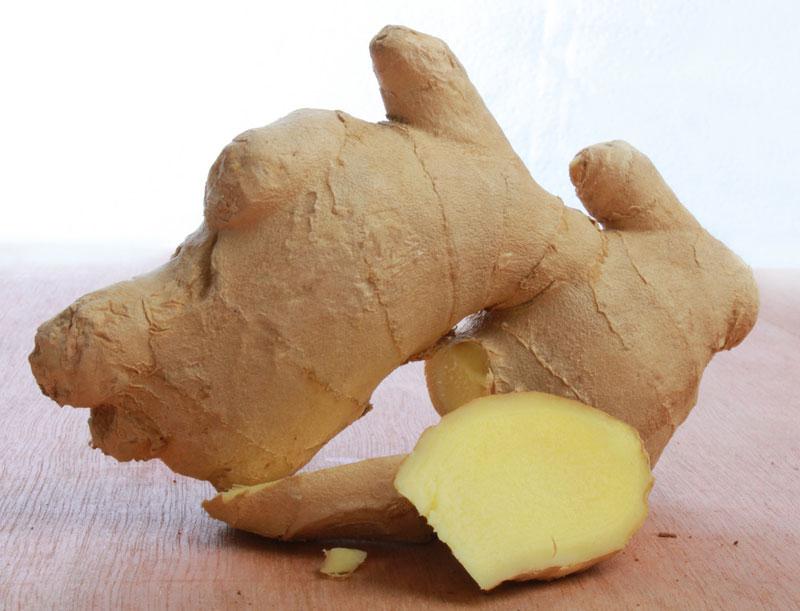
Ginger adds zing to hot Indian tea, provides a warming holiday flavor to crisp cookies, and serves as a palate-cleansing pickle next to sushi. Considering its versatility, ginger could be considered a culinary ninja — it sneaks into various foods and makes them way tastier.
“It’s probably the most untrendy spice, considering almost everybody on earth’s used it,” said Bruce Cost, the founder of Bruce Cost Ginger Ale and the author of Ginger East to West.
People around the world have long valued ginger for its stomach-settling properties. Drinking ginger ale on the plane or chewing a ginger candy on a long car ride can help combat nausea. It’s also a digestive aid, and, like shiso leaf, it has antiseptic properties. That’s why it became a common accompaniment to sushi.
Pickled sushi is usually made from young ginger, which is a less mature form of regular ginger root. “[That type of ginger] actually has a narrow range of uses,” said Cost, whose ginger ale is made with fresh mature ginger. “For people cooking Asian food, they wouldn’t necessarily go buy [young] ginger… anybody that cooks Chinese food would need a more mature ginger because of its spiciness.” 
Cost works with a farm in China to source larger ginger for a better peel-to-flesh ratio for making ginger ale, but he explained that many cooks prefer to use smaller knobs of ginger, because they find it to be more flavorful.
(Photo: Young ginger/shanta/flickr)
While Cost prefers to use fresh ginger, he said that powdered ginger used to be the go-to form in certain part of the world. It even graced tabletops, right next to pepper shakers, up until World War II. “[Powdered] ginger was on the bars in pubs in England until the ‘40s and ‘50s,” he said.
Fortunately, we now have ready access to fresh ginger imported from China and specialty ginger grown in Hawaii. If you’re looking for an East Asian application of the popular root, try Cost’s recipe for hot and sour Napa cabbage, below.
Hot and Sour Napa Cabbage
with fresh chilies and ginger
by Bruce Cost
- ½ head of Napa cabbage (about 1 ¾ lbs)
- 1 tablespoon + ½ teaspoon of salt
- 1 tablespoon julienne of fresh ginger
- 1 tablespoon fine julienne fresh red chili pepper (preferably not jalapeño)
- 1/3 cup vinegar (mixture of half unseasoned Japanese rice vinegar and half red wine vinegar)
- 6 tablespoons sugar
- 3 tablespoons peanut oil
- 4 small dried chili peppers
- ½ teaspoon Sichuan peppercorns
- 1 teaspoon sesame oil
Remove core from cabbage and cut across the leaves into a thin julienne. Toss with the tablespoon of salt and let sit for at least 45 minutes.
Meanwhile, heat and combine the vinegars, sugar and remaining half teaspoon of salt in a small saucepan. Turn off the heat and let sit.
Heat another saucepan over medium-high heat and add the peanut oil, dried chilies and Sichuan peppercorns. When the peppercorns begin to blacken and smoke, turn off the heat and stir in the fresh ginger and chilies.
After a few minutes of cooling, add the vinegar/sugar mixture to the pan with the oil/peppercorn. Stir briefly to combine all.
Drain cabbage and wring all possible moisture from the leaves using your hands or putting in a clean cloth and writing out. Place the cabbage in a mixing bowl and add about ¼ cup of the sauce. Then add the sesame oil, mix and serve. (This may sit for awhile before serving.)